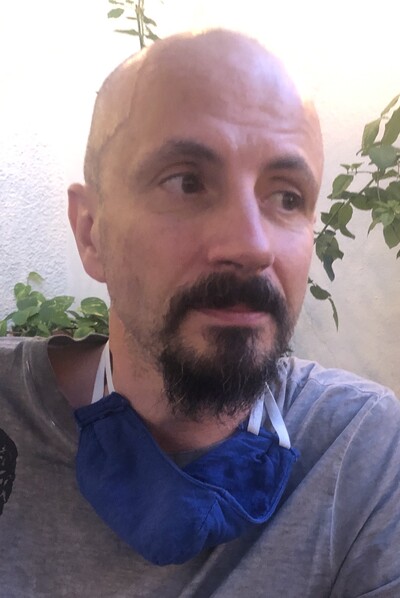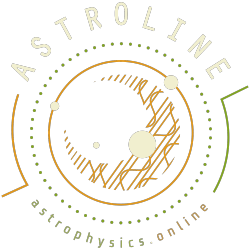El objetivo de este proyecto es promover el pensamiento científico a través de la astronomía a estudiantes en licenciatura y maestría de todo México. Este proyecto ha sido financiado a través de la convocatoria PAPIME de DGAPA en 2016 (PE108016). La responsable principal es la Dra. Omaira González Martín. Desde estos comienzos, hemos seguido manteniendo la plataforma través de proyectos de investigación DGAPA PAPIIT (IA100516, IA103118, y IN105720). Son colaboradores actuales del proyecto:
- Daniel J. Díaz González (Técnico académico Titular A, encargado del soporte de la plataforma).
- Carlos Carrasco González (Investigador Titular B, SNI II).
- Roberto Galván Madrid (Investigador Titular A, SNI II).
- Jacopo Fritz (Investigador Titular B, SNI II).
- Jesús Toalá Sanz (Investigador Asociado C, SNI I).
Para más información acerca de cada investigador (solo en inglés)…
Omaira González Martín
 Dr. Omaira González-Martín obtained her degree in physics from the University of La Laguna, Spain, and her PhD in astrophysics from the Instituto de Astrofísica de Andalusia (IAA-CSIC) and the University of Granada. She did postdoctoral research at the University of Leicester, the University of Crete and the Instituto de Astrofísica de Canarias. She has been a researcher at the National Autonomous University of Mexico (UNAM) since 2014.
Dr. Omaira González-Martín obtained her degree in physics from the University of La Laguna, Spain, and her PhD in astrophysics from the Instituto de Astrofísica de Andalusia (IAA-CSIC) and the University of Granada. She did postdoctoral research at the University of Leicester, the University of Crete and the Instituto de Astrofísica de Canarias. She has been a researcher at the National Autonomous University of Mexico (UNAM) since 2014.
She studies active galactic nuclei, principally in the Local Universe. In particular, she researches the properties of dust associated with these galaxies using advanced statistical techniques applied to large collections of observational data at mid-infrared and X-ray wavelengths.
Currently, Dr. González-Martín is the head of postgraduate studies in the Institute for Radioastronomy and Astrophysics (IRyA) and organizes the AGN group in the institute. In 2021 she was awarded the Reconocimiento Distinción Universidad Nacional para Jóvenes Académicas (RDUNJA) in the area of research in the exact sciences.
 Daniel Díaz graduated as Technical Engineer in Computer Systems and Computer Engineer from the University of La Laguna, Spain. He obtained his MSc in astrophysics at the National Autonomous University of Mexico (UNAM). He has been a member of the technical staff at the UNAM since 2019.
Daniel Díaz graduated as Technical Engineer in Computer Systems and Computer Engineer from the University of La Laguna, Spain. He obtained his MSc in astrophysics at the National Autonomous University of Mexico (UNAM). He has been a member of the technical staff at the UNAM since 2019.
He works on network monitoring, scientific computing and server administration in the Institute of Radioastronomy and Astrophysics (IRyA). He also offers support in scientific software development in the institute,
Carlos Carrasco González
 Dr. Carlos Carrasco-González obtained his bachelor’s degree in physics from the University of La Laguna, Spain, and his PhD in astrophysics from the University of Granada and the Instituto de Astrofísica de Andalucía (IAA-CSIC) in 2010. He has been a researcher at the National Autonomous University of Mexico (UNAM) since 2013.
Dr. Carlos Carrasco-González obtained his bachelor’s degree in physics from the University of La Laguna, Spain, and his PhD in astrophysics from the University of Granada and the Instituto de Astrofísica de Andalucía (IAA-CSIC) in 2010. He has been a researcher at the National Autonomous University of Mexico (UNAM) since 2013.
He uses radio-inteferometric observations to study astrophysical jets and protoplanetary disks. In particular, he studies the magnetic field and collimation mechanisms in protostellar jets using the radio-interferometers ALMA (Atacama Large Millimeter Array) and VLA (Very Large Array). He also studies the evolution of dust and planet formation in protoplanetary disks.
Dr. Carrasco-González has been head of postgraduate studies in astrophysics at the Institute of Radioastronomy and Astrophysics, and also organizes a summer research program in the IRyA for undergraduate students from Mexico and other Latin American countries.
 Dr. Galván did his undergraduate studies in Physics at the Autonomous University of Nuevo León (UANL), and his PhD in Astronomy at the National Autonomous University of Mexico (UNAM), working as a predoctoral fellow at the Harvard-Smithsonian Center for Astrophysics. Later he was a postdoctoral fellow at the European Southern Observatory (ESO) headquarters in Garching, Germany. He has been a researcher at the Institute of Radioastronomy and Astrophysics (IRyA) of the UNAM since 2014. Dr. Galván currently is the Head of Computing Services at IRyA. He was elected Young Affiliate Fellow by The World Academy of Sciences (TWAS) in 2015.
Dr. Galván did his undergraduate studies in Physics at the Autonomous University of Nuevo León (UANL), and his PhD in Astronomy at the National Autonomous University of Mexico (UNAM), working as a predoctoral fellow at the Harvard-Smithsonian Center for Astrophysics. Later he was a postdoctoral fellow at the European Southern Observatory (ESO) headquarters in Garching, Germany. He has been a researcher at the Institute of Radioastronomy and Astrophysics (IRyA) of the UNAM since 2014. Dr. Galván currently is the Head of Computing Services at IRyA. He was elected Young Affiliate Fellow by The World Academy of Sciences (TWAS) in 2015.Study of the gas and dust involved in the formation of star clusters and individual stars, mainly using radio astronomy techniques. Production of observables from theoretical models.
 Dr. Jacopo Fritz obtained his bachelor’s degree in astronomy from the Università degli Studi di Padova, Italy, and his PhD in astronomy from the same institution. He did postdoctoral research at the Padova and Bologna Astronomical Observatories, Italy, and also at the University of Ghent, Belgium. He has been a researcher at the National Autonomous University of Mexico (UNAM) since 2014.
Dr. Jacopo Fritz obtained his bachelor’s degree in astronomy from the Università degli Studi di Padova, Italy, and his PhD in astronomy from the same institution. He did postdoctoral research at the Padova and Bologna Astronomical Observatories, Italy, and also at the University of Ghent, Belgium. He has been a researcher at the National Autonomous University of Mexico (UNAM) since 2014.
He studies the spectral energy distribution and stellar populations in galaxies undergoing ram-pressure stripping using radiative transfer models. He belongs to international consortia that are responsible for large observational projects, principally at infrared wavelengths. He is also interested in emission models of active galactic nuclei in the infrared.
Currently, Dr. Fritz is head of the bibliographic collection and scientific information of the Institute of Radioastronomy and Astrophysics.
 El Dr. Jesús Toalá estudió la licenciatura en física en la Universidad Autónoma de Sinaloa y el doctorado en astrofísica en el Instituto de Astrofísica de Andalucia (IAA-CSIC) y la Universidad de Granada, España. Realizó estancias posdoctorales en el IAA-CSIC y en el Instituto de Astronomía y Astrofísica de la Academia Sinica (ASIAA) en Taiwan. Es investigador de la UNAM desde 2017.
El Dr. Jesús Toalá estudió la licenciatura en física en la Universidad Autónoma de Sinaloa y el doctorado en astrofísica en el Instituto de Astrofísica de Andalucia (IAA-CSIC) y la Universidad de Granada, España. Realizó estancias posdoctorales en el IAA-CSIC y en el Instituto de Astronomía y Astrofísica de la Academia Sinica (ASIAA) en Taiwan. Es investigador de la UNAM desde 2017.
Estudia el medio circunestelar alrededor de estrellas de baja y alta masa mediante observaciones en longitudes de onda en infrarrojo, óptico y rayos X. También estudia los rayos X provenientes de superburbujas en la Nube Mayor de Magallanes.
El Dr. Toalá organiza las reuniones del grupo de estrellas evolucionadas y además es miembro del consejo editorial del Boletín de la UNAM, Campus Morelia.


